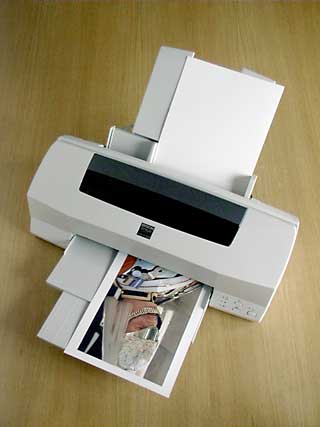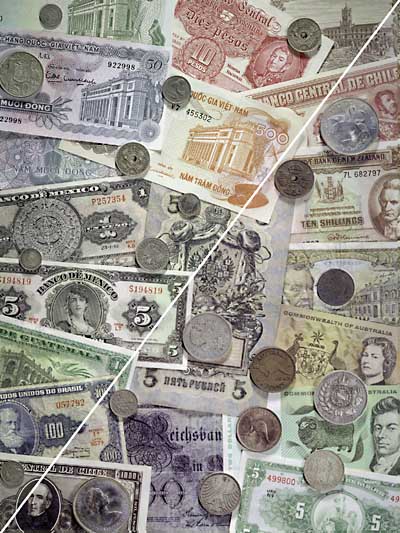Bargain-Priced Photo realistic Printer
by John Henshall

Over the past few years we've been hearing more and more about 'photo realistic' ink jet printers. Looking back, those early printers show a structure to the image which is definitely not photographic. Things have come a long way, though, to the point at which it is now difficult to see the structure, even with a loupe.
The new Epson Stylus PhotoEX is a truly 'photo realistic' printer at a fraction of the price of the dye sublimation printers which were so popular at around £6,000 just a few years ago. At under £400 the PhotoEX is a bargain.
Media costs are not cheap, however, and they do vary greatly from one supplier to another. At Jessops, a pack of twenty sheets of Epson Photo Glossy Paper costs £7.45. The finish is good but the ripply surface is not as nice as 'real' photographic paper. At Jessops a black ink cartridge costs £16.95, a colour ink cartridge £12.95. At Dixons and PC World these cost £19.99 and £18.99 respectively - almost half as much again for the colour cartridge, so buy carefully. The colour cartridges have five-colours: cyan, magenta, yellow, light cyan and light magenta which give much better results in highlight areas. When printing photographs, the colour cartridges need changing much more often than the black only ones.
The PhotoEX will print up to 44 x 11 inches - double A3 joined end to end - so it is good for panoramas or collages of unusual shape. For a printer capable of printing this large, the footprint of 21 x 9 inches (54 x 23cm) is quite small. Some extra space is needed for the paper support and output tray at the back and front during printing.
 The
printer works with both PC and Mac. The printer drivers are
exemplary, with easy selection of every adjustment possible.
Print quality is outstanding. Note the tiny section of the
eyeball of a subject on a print, enlarged fifteen times.
This monochrome image is printed in six colours by the
printer, all of which have to blend together to give the
impression of a neutral greyscale print - which the Epson
Stylus Photo-EX does superbly. At extreme magnification, the
individual coloured dots which make up the greyscale can be
seen. At normal viewing distances these are imperceptible.
Prints emerge dry, though feel slightly tacky for some time.
The main drawback with ink jet prints seems to be fading,
though lamination or a UV spray coating helps slow this
process.
The
printer works with both PC and Mac. The printer drivers are
exemplary, with easy selection of every adjustment possible.
Print quality is outstanding. Note the tiny section of the
eyeball of a subject on a print, enlarged fifteen times.
This monochrome image is printed in six colours by the
printer, all of which have to blend together to give the
impression of a neutral greyscale print - which the Epson
Stylus Photo-EX does superbly. At extreme magnification, the
individual coloured dots which make up the greyscale can be
seen. At normal viewing distances these are imperceptible.
Prints emerge dry, though feel slightly tacky for some time.
The main drawback with ink jet prints seems to be fading,
though lamination or a UV spray coating helps slow this
process.
It is impossible to demonstrate print quality in the pages of a magazine - or on the Web - but I have to try. I printed an image taken on the BetterLight scan back and then scanned the print on my Agfa DuoScan scanner. Then I overlaid part of the original BetterLight image file. Can you tell which is which? (The top left is the scan of the Epson Stylus PhotoEX print, bottom right is part of the original BetterLight image file.) This little wonder is the equivalent of a whole print processor in one small unit - but without the chemicals.

The top left is the scan of the Epson Stylus PhotoEX print, bottom right is part of the original BetterLight image file.
This article first appeared in "John Henshall's Chip Shop", July/August 1998.
IMPORTANT
NOTICE
This document is Copyright © 1998 John Henshall. All
rights reserved.
This material may only be downloaded for personal
non-commercial use. Please safeguard the future of online
publishing by respecting this copyright and the rights of
all other authors of material on the Internet.